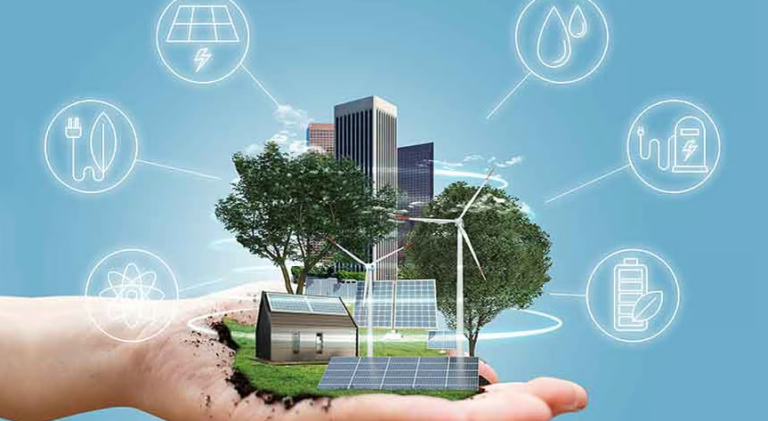Technology Trends Driving Smart Cities Development
Introduction to Smart Cities
The concept of smart cities has rapidly evolved in the past decade, reshaping how urban environments function and improving the quality of life for millions of people worldwide. A smart city uses advanced technologies and data-driven solutions to optimize city operations, enhance public services, and promote sustainable growth. From traffic management to energy conservation, smart cities are leveraging innovative technology trends to address urban challenges and create more connected, efficient, and livable communities.
The Importance of Technology in Smart City Development
Enhancing Urban Living with Technology
Technology is the backbone of smart city development. By integrating digital infrastructure and smart devices, cities can improve the delivery of essential services such as transportation, healthcare, waste management, and public safety. This integration helps in reducing congestion, lowering pollution levels, and enhancing resource management—ultimately leading to better urban living conditions.
See also: The Environmental Impact of Modern Technology
Sustainability and Efficiency Goals
One of the primary goals of smart cities is to foster sustainability by using technology to reduce energy consumption, minimize waste, and lower carbon footprints. Efficient use of resources ensures that cities can meet the needs of their growing populations without depleting natural resources, securing a healthier future for generations to come.
Key Technology Trends Shaping Smart Cities
Internet of Things (IoT)
IoT Sensors and Devices
The Internet of Things (IoT) is pivotal in smart city ecosystems. IoT devices, such as sensors embedded in roads, streetlights, buildings, and vehicles, collect vast amounts of data that provide real-time insights into city operations. These sensors monitor everything from air quality and noise pollution to traffic flow and energy usage.
Real-Time Data Collection and Analysis
The continuous data streams from IoT devices enable city officials to make informed decisions quickly. Real-time analytics facilitate proactive maintenance, immediate response to emergencies, and adaptive traffic signal control, leading to smoother and safer urban environments.
Artificial Intelligence and Machine Learning
Predictive Analytics for Urban Planning
Artificial Intelligence (AI) and Machine Learning (ML) algorithms analyze large datasets to predict trends, identify problems before they escalate, and optimize urban planning processes. For instance, AI models can forecast traffic jams and suggest alternative routes, reducing congestion and pollution.
AI-Powered Public Services
AI also enhances public services such as healthcare, security, and waste management by automating routine tasks and providing personalized citizen support through chatbots and virtual assistants.
5G and Advanced Connectivity
High-Speed Data Transmission
The rollout of 5G networks is a game-changer for smart cities. With faster speeds and lower latency, 5G enables seamless connectivity for millions of IoT devices, supports high-definition video surveillance, and facilitates real-time communication between city infrastructure components.
Enabling Smart Infrastructure
This ultra-reliable network supports smart grids, autonomous vehicles, and remote healthcare services, making cities more responsive and adaptive to residents’ needs.
Big Data and Cloud Computing
Data Storage and Management
Smart cities generate massive volumes of data daily. Big Data technologies help store, manage, and process this information efficiently. Cloud computing provides scalable resources that allow cities to analyze complex datasets without the need for extensive physical infrastructure.
Cloud-Based City Management Platforms
Many cities use cloud-based platforms to integrate data from different departments, enabling centralized monitoring and coordination of services such as emergency response, utilities, and transportation.
Autonomous Vehicles and Smart Transportation
Self-Driving Cars and Public Transit
Autonomous vehicles promise to revolutionize urban mobility by reducing accidents, lowering emissions, and optimizing traffic flow. Many smart cities are already experimenting with driverless buses and shuttles to enhance public transit.
Traffic Management Systems
Advanced traffic management systems use AI and IoT to monitor congestion and dynamically adjust traffic signals, improving travel times and reducing fuel consumption.
Renewable Energy and Smart Grids
Integrating Clean Energy Sources
Smart cities are increasingly incorporating renewable energy, such as solar and wind power, into their grids. Smart grids use digital technology to manage energy distribution efficiently and balance supply with demand.
Energy Efficiency and Demand Response
Demand response programs incentivize consumers to reduce or shift their electricity use during peak periods, leading to lower energy costs and a more stable power grid.
Blockchain for Smart Cities
Enhancing Security and Transparency
Blockchain technology provides a secure and transparent way to manage data and transactions in smart cities, reducing fraud and improving trust in public services.
Decentralized Data Management
By decentralizing data storage and control, blockchain enhances privacy protections and ensures data integrity across various city applications.
Challenges in Implementing Technology in Smart Cities
Privacy and Security Concerns
With the proliferation of data collection, privacy issues arise. Protecting citizens’ personal information and securing infrastructure against cyber-attacks remain top priorities for smart city planners.
Infrastructure Costs and Upgrades
Upgrading existing urban infrastructure to support new technologies can be costly and complex. Balancing budget constraints with the need for innovation is a continual challenge.
Interoperability and Standardization
Smart city technologies often come from multiple vendors with different standards. Ensuring interoperability between systems is critical for seamless integration and efficient operation.
Future Outlook: The Evolution of Smart Cities
Emerging Technologies on the Horizon
Technologies such as quantum computing, advanced robotics, and augmented reality are poised to further transform smart cities, offering new ways to engage citizens and optimize urban life.
The Role of Citizens in Smart City Development
Successful smart cities rely on active citizen participation through feedback, data sharing, and collaborative innovation. Engaging communities fosters inclusivity and ensures technology solutions address real needs.
Frequently Asked Questions (FAQs)
What defines a smart city?
A smart city integrates information and communication technologies (ICT) to enhance urban services, improve efficiency, and promote sustainable living.
How does IoT improve city management?
IoT devices collect real-time data that helps monitor infrastructure, manage traffic, reduce energy consumption, and improve public safety.
What are the benefits of 5G in smart cities?
5G provides high-speed, low-latency connectivity, enabling the efficient operation of IoT devices, smart grids, and autonomous transportation.
How do smart grids contribute to sustainability?
Smart grids optimize energy distribution, integrate renewable sources, and allow demand response, reducing waste and environmental impact.
What role does AI play in public safety?
AI-powered systems analyze data to detect threats, predict crime patterns, and support emergency response efforts.
What are the biggest challenges for smart cities?
Key challenges include data privacy, infrastructure costs, interoperability, and ensuring equitable access to technology.
Conclusion: Embracing Technology for Smarter Urban Futures
The journey toward smart cities is driven by a diverse array of cutting-edge technologies working together to transform urban living. By embracing IoT, AI, 5G, and other innovations, cities can become more efficient, sustainable, and responsive to their citizens’ needs. While challenges remain, the future of smart city development is bright, promising a new era of connected, intelligent urban environments that foster improved quality of life and environmental stewardship.



